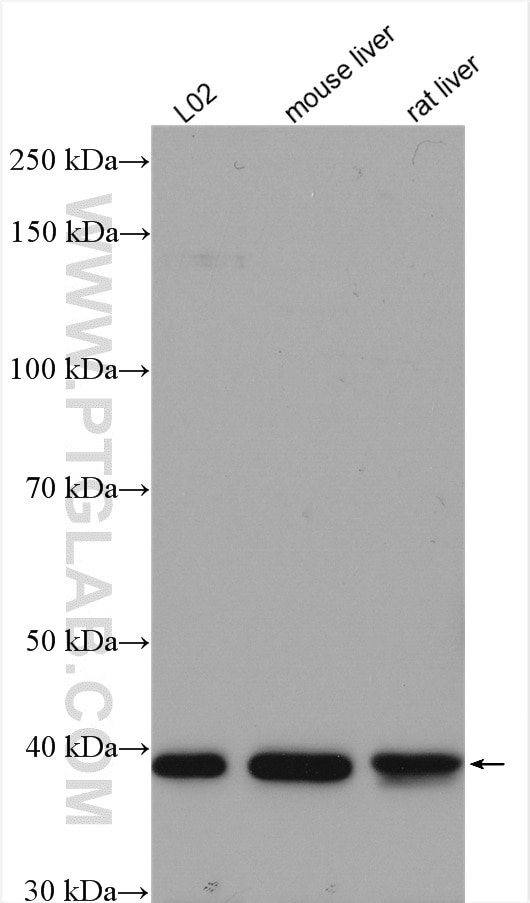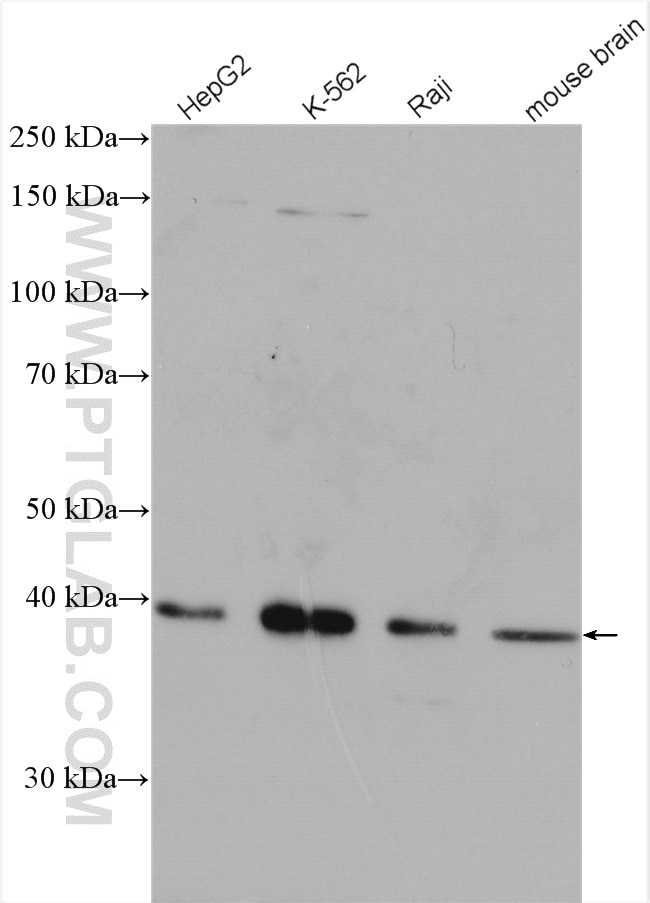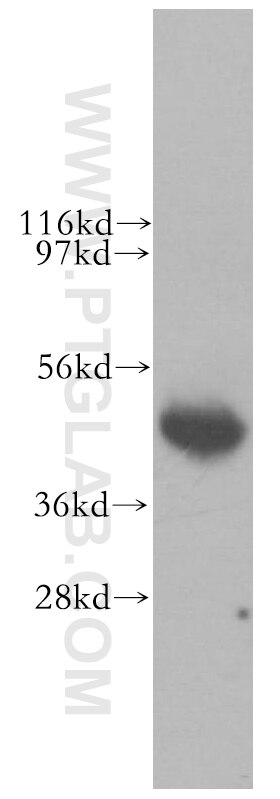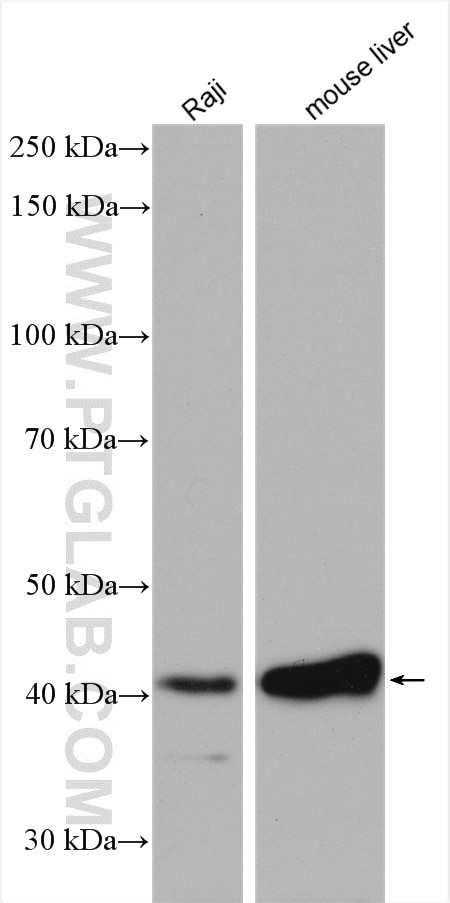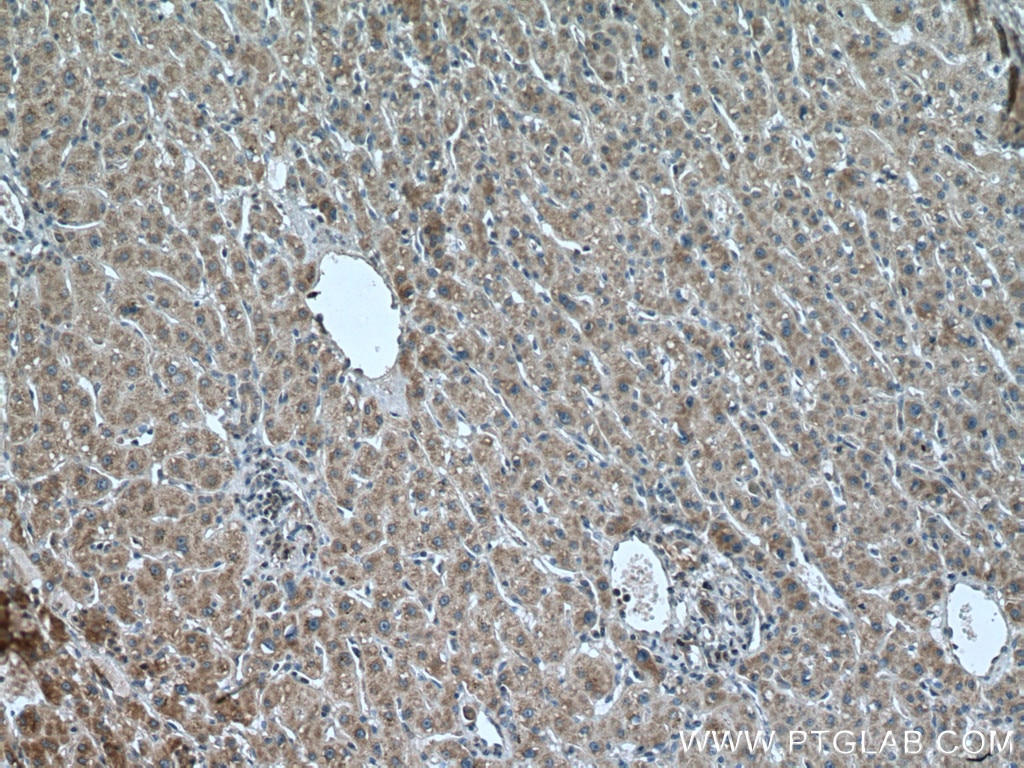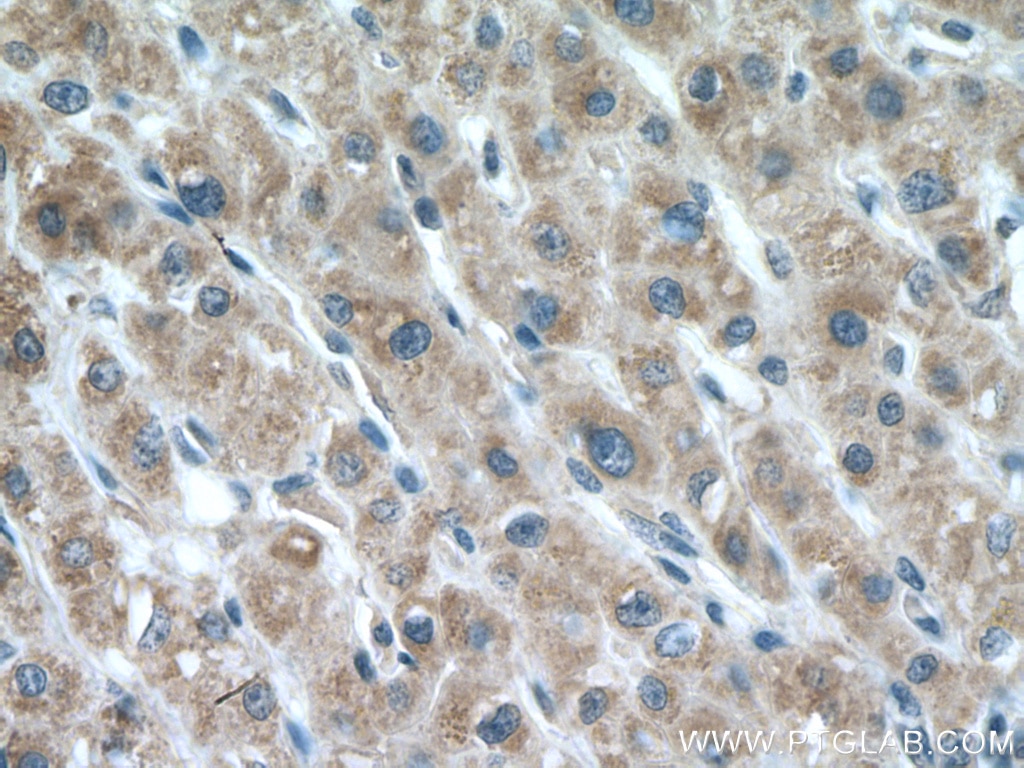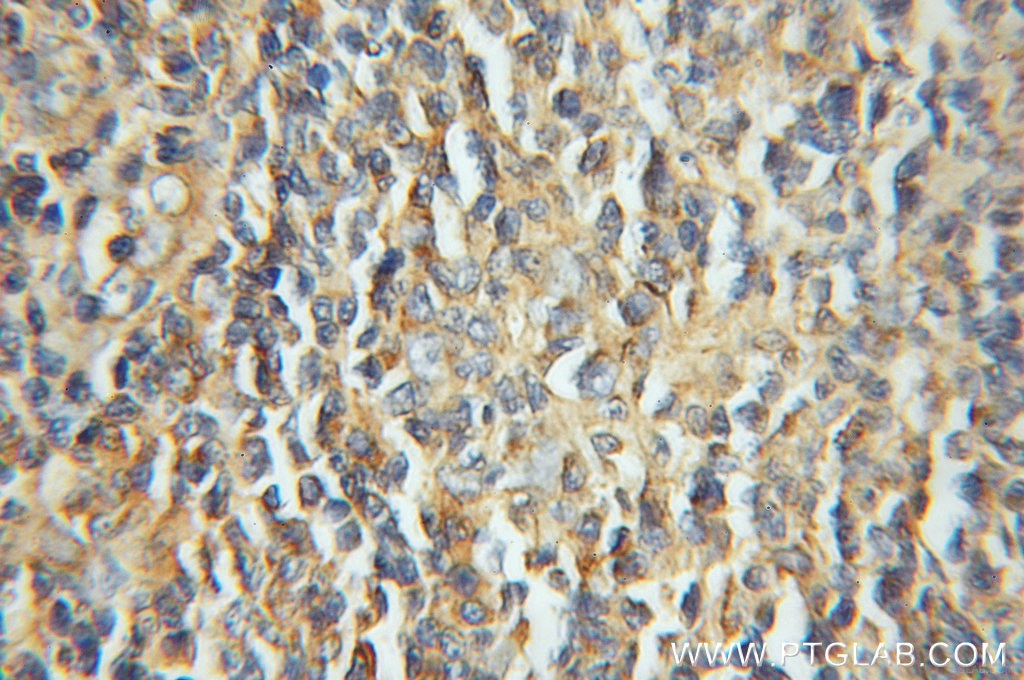LIAS Polyklonaler Antikörper
LIAS Polyklonal Antikörper für WB, IHC, ELISA
Wirt / Isotyp
Kaninchen / IgG
Getestete Reaktivität
human, Maus, Ratte
Anwendung
WB, IHC, IF, IP, ELISA
Konjugation
Unkonjugiert
Kat-Nr. : 11577-1-AP
Synonyme
Geprüfte Anwendungen
| Erfolgreiche Detektion in WB | L02-Zellen, HepG2-Zellen, humanes Hirngewebe, K-562-Zellen, Maushirngewebe, Mauslebergewebe, Raji-Zellen, Rattenlebergewebe |
| Erfolgreiche Detektion in IHC | humanes Leberkarzinomgewebe, humanes Lymphomgewebe Hinweis: Antigendemaskierung mit TE-Puffer pH 9,0 empfohlen. (*) Wahlweise kann die Antigendemaskierung auch mit Citratpuffer pH 6,0 erfolgen. |
Empfohlene Verdünnung
| Anwendung | Verdünnung |
|---|---|
| Western Blot (WB) | WB : 1:1000-1:5000 |
| Immunhistochemie (IHC) | IHC : 1:50-1:500 |
| It is recommended that this reagent should be titrated in each testing system to obtain optimal results. | |
| Sample-dependent, check data in validation data gallery | |
Veröffentlichte Anwendungen
| WB | See 69 publications below |
| IHC | See 11 publications below |
| IF | See 5 publications below |
| IP | See 1 publications below |
Produktinformation
11577-1-AP bindet in WB, IHC, IF, IP, ELISA LIAS und zeigt Reaktivität mit human, Maus, Ratten
| Getestete Reaktivität | human, Maus, Ratte |
| In Publikationen genannte Reaktivität | human, Maus, Ratte |
| Wirt / Isotyp | Kaninchen / IgG |
| Klonalität | Polyklonal |
| Typ | Antikörper |
| Immunogen | LIAS fusion protein Ag2162 |
| Vollständiger Name | lipoic acid synthetase |
| Berechnetes Molekulargewicht | 372 aa, 42 kDa |
| Beobachtetes Molekulargewicht | 34-42 kDa |
| GenBank-Zugangsnummer | BC023635 |
| Gene symbol | LIAS |
| Gene ID (NCBI) | 11019 |
| Konjugation | Unkonjugiert |
| Form | Liquid |
| Reinigungsmethode | Antigen-Affinitätsreinigung |
| Lagerungspuffer | PBS with 0.02% sodium azide and 50% glycerol |
| Lagerungsbedingungen | Bei -20°C lagern. Nach dem Versand ein Jahr lang stabil Aliquotieren ist bei -20oC Lagerung nicht notwendig. 20ul Größen enthalten 0,1% BSA. |
Hintergrundinformationen
LIAS(lipoyl synthase, mitochondrial) is also named as LAS and belongs to the radical SAM superfamily and lipoyl synthase family. It produces alpha-lipoic acid, an antioxidant and an essential cofactor in alpha-ketoacid dehydrogenase complexes, which participate in glucose oxidation and ATP generation(PMID:22021711). The deduced 373-amino acid protein has a calculated molecular mass of about 42 kD. The N-terminal 26 amino acids encode a potential mitochondrial targeting presequence that, upon removal, would result in a deduced mature protein of 347 amino acids with a molecular mass of about 39 kD(PMID:11389890). Defects in LIAS are a cause of pyruvate dehydrogenase lipoic acid synthetase deficiency (PDHLD).
Protokolle
| PRODUKTSPEZIFISCHE PROTOKOLLE | |
|---|---|
| WB protocol for LIAS antibody 11577-1-AP | Protokoll herunterladen |
| IHC protocol for LIAS antibody 11577-1-AP | Protokoll herunterladenl |
| STANDARD-PROTOKOLLE | |
|---|---|
| Klicken Sie hier, um unsere Standardprotokolle anzuzeigen |
Publikationen
| Species | Application | Title |
|---|---|---|
Adv Sci (Weinh) Enzalutamide Sensitizes Castration-Resistant Prostate Cancer to Copper-Mediated Cell Death | ||
Mol Cell Maintaining Iron Homeostasis Is the Key Role of Lysosomal Acidity for Cell Proliferation. | ||
Small A Copper-Manganese Based Nanocomposite Induces Cuproptosis and Potentiates Anti-Tumor Immune Responses | ||
J Immunother Cancer C5a/C5aR pathway blocking promoted CuS-mediated cancer therapy effect by inhibiting cuproptosis resistance |
